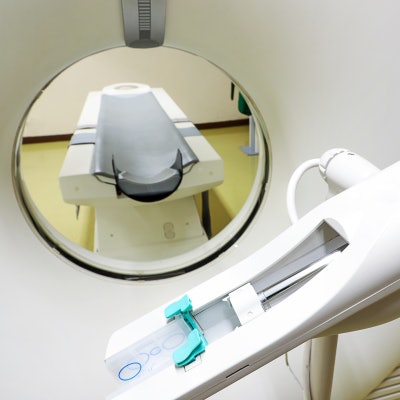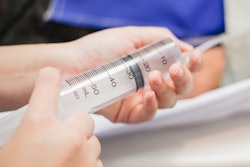
There are at least five ways to conserve iodinated contrast media for CT scans in the midst of the current global supply shortage, and they are even more effective if combined, according to a research letter published June 9 in JAMA.
A team led by Dr. Michael Davenport of Michigan Medicine in Ann Arbor presented a modeling study that found the use of intravenous contrast for CT exams can be reduced by more than 80% by combining dose-reduction strategies. The panel also included Philip Chu of the University of California, San Francisco (UCSF); Timothy Szczykutowicz, PhD, of the University of Wisconsin in Madison; and Dr. Rebecca Smith-Bindman, also of UCSF.
"This is a really good time to encourage referring physicians not to order scans that are unlikely to be helpful or that can be delayed," Smith-Bindman told AuntMinnie.com. "For example, the value of surveilling incidental findings with contrast is low -- we definitely should not be doing those exams now -- and annual assessment of small pulmonary nodules can be pushed back a bit."
In April, the world began to experience a shortage of CT contrast, due in large part to the effect of a COVID-19 lockdown in Shanghai, China, on GE Healthcare's Omnipaque (iohexol) manufacturing facility. GE has been working to address the problem and its latest estimate for a return to regular supply is later this month.
"For CT examinations that usually use contrast, several approaches could potentially conserve contrast," the group wrote. "For example, unenhanced CT can have similar or only modestly lower diagnostic accuracy as contrast-enhanced CT for many indications."
Davenport and colleagues used a data sample of 1 million CT exams from UCSF's International CT Dose Registry that were performed between January 2015 and March 2021, and they set multiuse vials of contrast as default practice.
The authors listed the following five strategies for conserving CT contrast:
- Weight-based dosing for non-neurological CT exams.
- Reducing kV and contrast media dose if patient weight is less than 176 lbs (80 kg).
- Performing noncontrast CT exams if the effect on accuracy is moderate (especially for nonvascular studies).
- A combination of 1 and 2.
- A combination of 1, 2, and 3.
Of the total number of scans taken from the registry, 40% used contrast, and 47.1 million mL of contrast were used, the group noted. The researchers assessed the effectiveness of each model, as well as the effectiveness of using single-use or multi-use vials.
| Estimated reduction in CT contrast use by modeled strategy | ||||
| Strategy | Percentage of CT contrast reduction (multiuse vials) | Percentage of CT contrast reduction (single use, 20 mL, 50 mL, and 100 mL vials) | Percentage of CT contrast reduction (single use, 50 mL and 100 mL vials) | Percentage of CT contrast reduction (single use, 100 mL vials) |
| Strategy 1 | 12% | 9% | 11% | 16% |
| Strategy 2 | 25% | 24% | 27% | 20% |
| Strategy 3 | 78% | 78% | 78% | 78% |
| Strategy 4 | 80% | 80% | 80% | 81% |
| Strategy 5 | 83% | 83% | 84% | 82% |
The authors acknowledged that they did not model any potential downsides to diagnostic accuracy from reducing contrast. But their results are compelling, especially when it comes to taking the best possible care of patients, Smith-Bindman said.
"We can't use contrast when it's not critical right now without hurting patients who really need contrast-enhanced exams," she said.





















